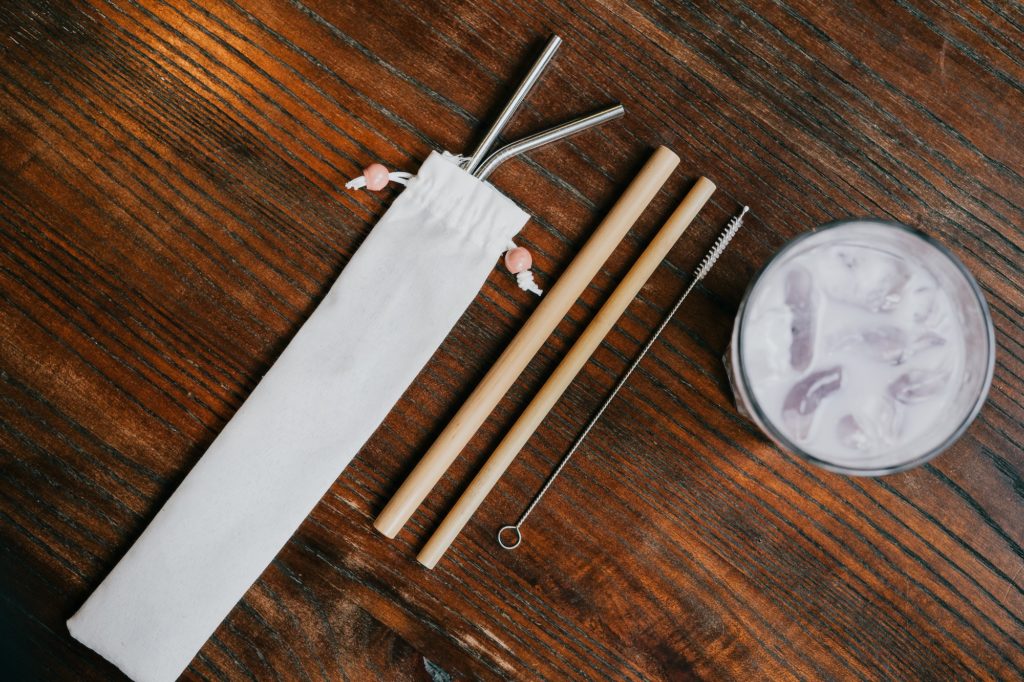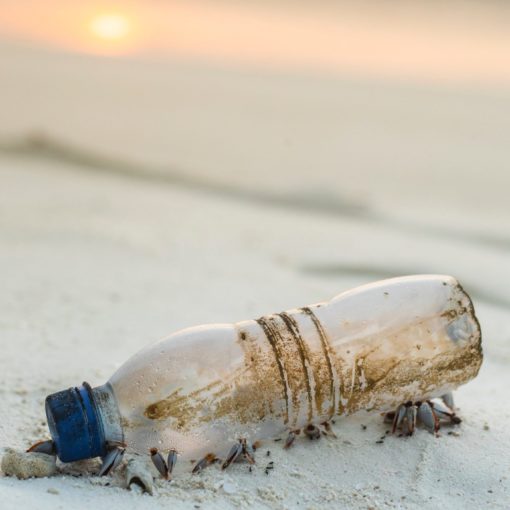Inspired by my discussion with Mona Neuhauss from No Plastic Japan, you will find below 5 easy and cheap zero waste swaps in Japan. These are complementing the single-use plastic alternatives, I had previously shared.
1/ Carry your own chopsticks around
Did you know that 25 billion pairs of chopsticks get thrown away every year just in Japan?
This is equivalent of what would be needed to build 17 000 houses of 120m2!
When going out and about or getting a bento, it is actually very easy for you prevent such waste. You can easily buy some chopsticks kits in places life Loft, Tokyo Hands etc. or simply bring a pair of chopsticks from home wrapped in a handkerchief.
2/ Get a reusable straw
Replace single-use plastic straws with a reusable one. You can choose one in bamboo or in metal. I actually recommend you the metal ones as I personally find them easier to wash.
Get yours from No Plastic Japan online or in one of the stores that are retailing their straws. They have 2 different widths so you can also use a reusable straw for your bubble tea!
When going to a coffee or a restaurant, always ask for no straw “ストローいらない”, when ordering a cold drink as you will most likely end up with a single-use straw if you don’t tell them upfront.
If you have kids, I recommend you to avoid steel straws as they could have more chance to hurt themselves with them. In that case, bamboo straws are a good option, just make sure you follow these instructions to keep them longer.

3/ Bring your own containers and produce bags
If you are looking into buying products in bulk, you can start with rice. It is fairly easy to do so in Japan as you usually have small rice stores spread across cities.
If you are living in Tokyo area, I recommend you to pop by Nue by Totoya which is an initiative Mona Neuhauss is part of and where you will be able to buy all kinds of organic dry products in bulk.
In order to start buying dry products in bulk, you will need to get used to bringing your own containers with you when going food shopping.
You can get new produce bags for dry goods from various places, but you can also simply reuse what you have at home. For example, I am still using the same brown paper bag I got last time I bought packaged rice. This works well for the time being and after a year it is still in great condition. I might look into making my own rice bag the day it starts falling apart!
For liquids, bentos or other non dry products, you can use reusable containers or old coffee or jam pots. I recommend you to prefer glass over plastic for these containers. Indeed plastic can leach endocrine disruptors into food, especially when it contains lots of fats such as meat and cheese.
Besides, if you are going to reheat food, do not use a plastic container, even if it is microwave safe as it will leach chemicals into your food.
4/ Switch tissue papers for handkerchiefs
Tissue papers or paper napkins are items we are sometimes not even aware that we are using anymore as it has become so engrained in our daily habits.
It is quite an easy waste to avoid and you can simply replace them by washable handkerchiefs. Always keep 2 with you, one for taking care of a runny nose and the other for wiping your hands or mouth during a meal.
There are so many beautiful designs available in Japanese so you won’t struggle to find a nice and modern looking one. If you want to be even more eco-friendly, you can make some from old tee shirts or bedsheets or opt for ones made from organic cotton.
5/ Avoid disposable cups
When going out for coffee, ask the barista for a reusable cup if you are planning to have your drink in. Indeed, some places will still use disposable cups by default even if they have washable ones available.
Some places won’t always have reusable cups, so it could be worth keeping your own mug in your bag just in case. I recommend you the Grip tumbler from Thermo mug as it is very versatile and can accommodate all sorts of beverages. On top of that, it has a screw top which allows you to store it back in your bag without fearing leakage.
I hope you found these tips useful! Don’t hesitate to let me know in the comments your best zero waste tips!


